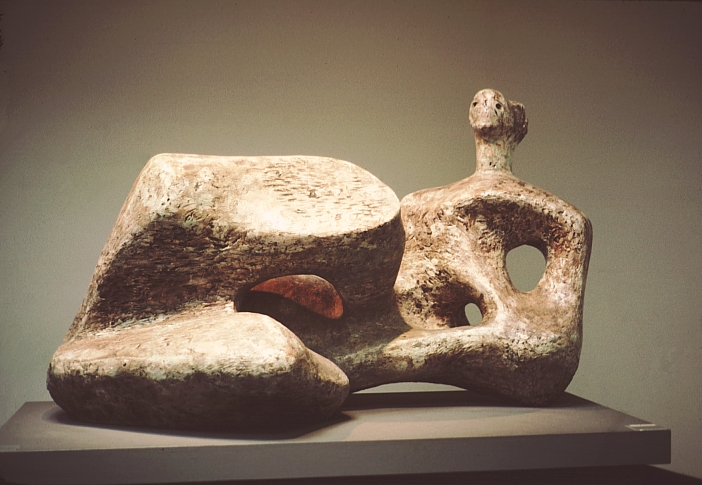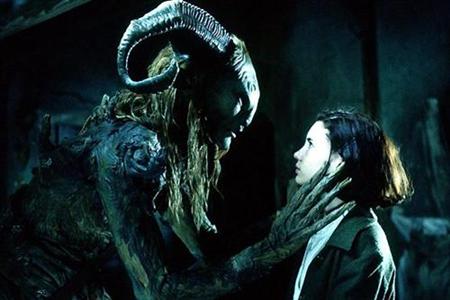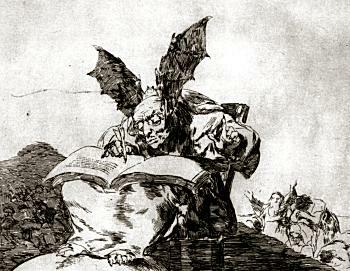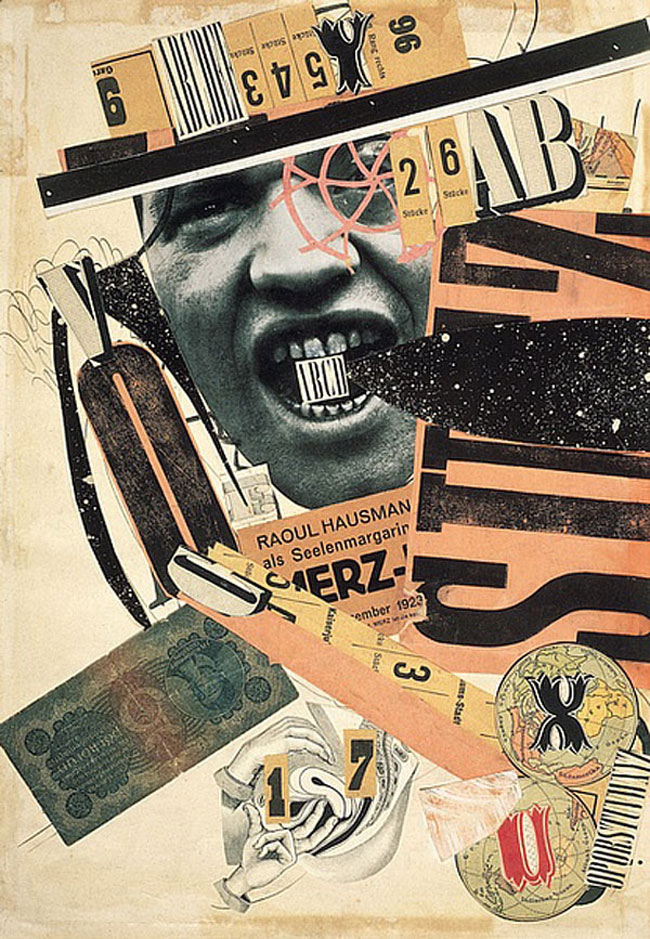Salvador Dali 'Soft Construction With Boiled Beans (Premonition of Civil War)',1936, oil on canvas.
This painting is one of only a handful in which Dalí turned his attention to the tragedy that beset his homeland on July 17, 1936, when General Francisco Franco led a military coup d'état against the democratically elected Popular Front government. The artist's savage vision of his country as a decomposing figure tearing itself apart preceded the outbreak of the Spanish Civil War and thus prophetically foretold the atrocities committed during this bloody conflict. Other artists who have focused on the Spanish Civil War are Picasso (Guernica), Guillermo del Toro (Pan's Labyrinth) and, during the earlier civil war, Goya (Disasters of War). Dada Photomontage distorted the human form immediately after the first world war. As well as having surreal qualities these images, like the Dada Photomontages could be a reaction to the human horrors of the first world war and the rise of 1930's fascism.
Henry Moore. Working Model for Reclining Figure, 1957. Bronze.
Henry Moore emerged in the 1920s as a radical, experimental and avant-garde figure and was rapidly established as the leading British sculptor of his generation. His principal and enduring subject was the human body, through which he believed ‘one can express more completely one’s feelings about the world than in any other way’. Moore also reflected in his work his reaction to two world wars. The smooth quality of these images are similar to the effect of melting ice and how is distorts as it transforms back into liquid.
Graham Sutherland 'The city: a fallen lift shaft' 1941
This painting is by Moores contemporary Graham Sutherland. These bomb damaged buildings were in an area just north of St Paul's cathedral. Described by Sutherland as an eerie, foul-smelling, deserted wasteland, it was one which he explored with growing confidence during the Blitz, although occasionally buildings would spontaneously collapse around him. Amid this barren scene, Sutherland has animated the twisted structure, creating a presence that both threatens new life and yet also implies its possibility.
Pablo Picasso - 'Guernica' 1937
Pacasso was not a political artist. 'Guernica' is Pablo Picasso response to the bombing of Guernica, Basque Country, by German and Italian warplanes at the behest of the Spanish Nationalist forces, on 26 April 1937, during the Spanish Civil War. Picasso's style changed throughout his career but certain stylised cubist element can be seen in this epic painting. Picasso's Bull motif appears along with distorted images of screaming faces and limbs. The monochrome image is broken up by abstract flat planes and figurative elements. A sole light hangs in the centre like an all seeing eye - viewing the atrocities humans are capable of.
'What do you think an artist is? An imbecile who has only eyes if he is a painter, or ears if he is a musician, or a lyre in every chamber of his heart if he is a poet, or even, if he is a boxer, just his muscles? Far, far from it: at the same time, he is also a political being, constantly aware of the heartbreaking, passionate, or delightful things that happen in the world, shaping himself completely in their image. How could it be possible to feel no interest in other people, and with a cool indifference to detach yourself from the very life which they bring to you so abundantly? No, painting is not done to decorate apartments. It is an instrument of war'
Pablo Picasso
Still from 'Pan's Labyrinth' Guillermo Del Toro's 2006
'Pan's Labyrinth' is a fanciful and chilling story set against the backdrop of a fascist regime in 1944 rural Spain. It is a bold juxtaposition of real and unreal worlds - mixing visually inventive fantasy with the menace of Franco-ite Spain. The film centers on Ofelia, a lonely and dreamy child living with her mother and adoptive father; a military officer tasked with ridding the area of rebels. In her loneliness, Ofelia creates a world filled with fantastical creatures and secret destinies. With post-war repression at its height, Ofelia must come to terms with her world through a fable of her own creation.”. Del Toro's has cited Goya as an influence on the visual elements of his films.
'Contrary to the General Interest' (The Disasters of War) Goya
Goya - plates from 'The Disasters of War' 1810-1820
Francisco Goya:Saturn Devouring His Children (c.1819-21)
Saturn Devouring His Son is the name given to a painting by Spanish artist Francisco Goya. It depicts the Greek myth of the Titan Cronus (in the title Romanised to Saturn), who, fearing that his children would overthrow him, ate each one upon their birth. It is one of the series of Black Paintings that Goya painted directly onto the walls of his house sometime between 1819 and 1823.
The work was transferred to canvas after Goya's death and now resides in the Museo del Prado in Madrid. The grainy warm colours are similar to the tones in 'Pan's Labyrinth'. In the film Del Toro jumps between warm orangy hues and cool blue monochromes. Goya also created 'The Disasters of War' 1810-1820 showing what people are capable of in times of war.
The top image is by Goya and created almost 200 years ago. The bottom image was allegedly taken at Abu Ghraib in 2003 by soldiers. The image is now know as "The Man behind the Hood" - It could be from Goya's series. These images are now part of our modern consciousness and raise ethical questions.
Goya - plates from 'The Disasters of War' 1810-1820
The Disasters of War are some of the most graphic images to come out of the brutal guerrilla war in the Peninsular War . Be warned, however, they may disturb some people as they contain disturbing scenes of horror, brutality, torture and the savagery of war.
Jake and Dinos Chapman 'Insult to Injury' (detail) 2003
Francisco de Goya "Disasters of War" portfolio of 80 etchings, reworked and improved
Jake and Dinos Chapman came to prominence with Damien Hirst and Tracey Emin in the early 1990's. The show 'Sensation', put together by Charles Saatchi, made many of these artists (known as the YBA's - Young British Artists) house hold names. It was not a movement as such but they shared certain characteristics. There was an element of populism, energy and shock - you would want to look away but you would be compelled to stare (as with the Chapman's or Hirst's shark). In many ways it was a reaction against the more serious work of the 1980's and the artists who dominated the British art scene (Tony Cragg, Howard Hodgkins etc). It seemed fresh and exciting while often seeming closer to advertising - The visual equivalent of shouting.
Jake and Dino Chapman could be described as the most shocking artists - above is their example of an 'improved' Goya. They bought an original Goya print and painted clown faces on top (reminiscent of Ronald McDonald). This seems like a childish act and a form of destruction. However there is a long tradition of appropriating the work of others (see Rauschenburg and De Kooning) and it gets us to question the preciousness of art. If this type of art seems shallow, ironic, greedy, vacuous, disrespectful remember - Societies often get the art they deserve.
Jake and Dinos Chapman 'Hell' (1999)
A detail from the brothers' critically acclaimed installation 'Hell' - featuring a series of miniature landscapes, showing thousands of model Nazi soldiers committing atrocities - which was the centrepiece of the RA's Apocalypse exhibition in 2000. This work was lost in a Ware house fire. Most people seemed over joyed that a lot of art had been destroyed as they felt no connection with contemporary art. This can be seen in several ways. On the one hand contemporary art leaves many feeling lost and disconnected. Should art be for the masses or the few? However, the tabloid gloating over the destruction of art seems dark. In the same way that the burning of books has dark connotations the destruction of any art shouldn't be celebrated. Dinos Chapman is reported to have shrugged off the loss, saying, "We will just make it again... It is only art."
Jake and Dino's Chapman

This image is by one of Dada's founding members, Raoul Hausmann, who claimed he invented Photomontage. The top image is actually a collage that mixes different printed emphemeria to create a jarring image. This image was created almost a hundred years ago and to Hausmann's contemporarys would have seemed raw and ugly. This busy, hectic visual language is common place today but it would not exist without the experiments of these early 20th century artists. Dada began under the shadow of the first world war - a generation of young men returning from the front line disfigured and broken. These horrors were captured delicately by the firstworld war artist Henry Tonks.










_-_Sleep_of_Reason.jpg)









